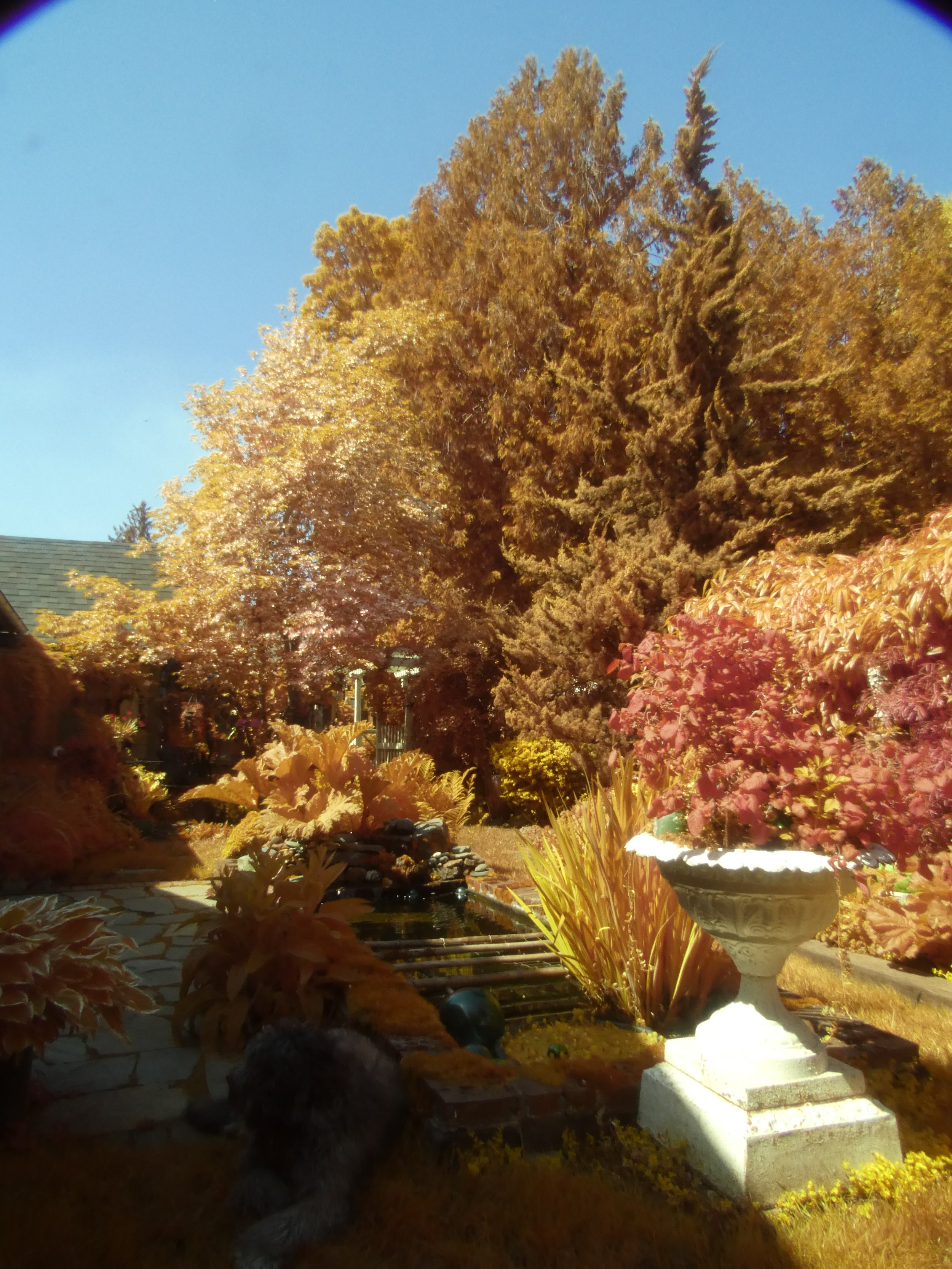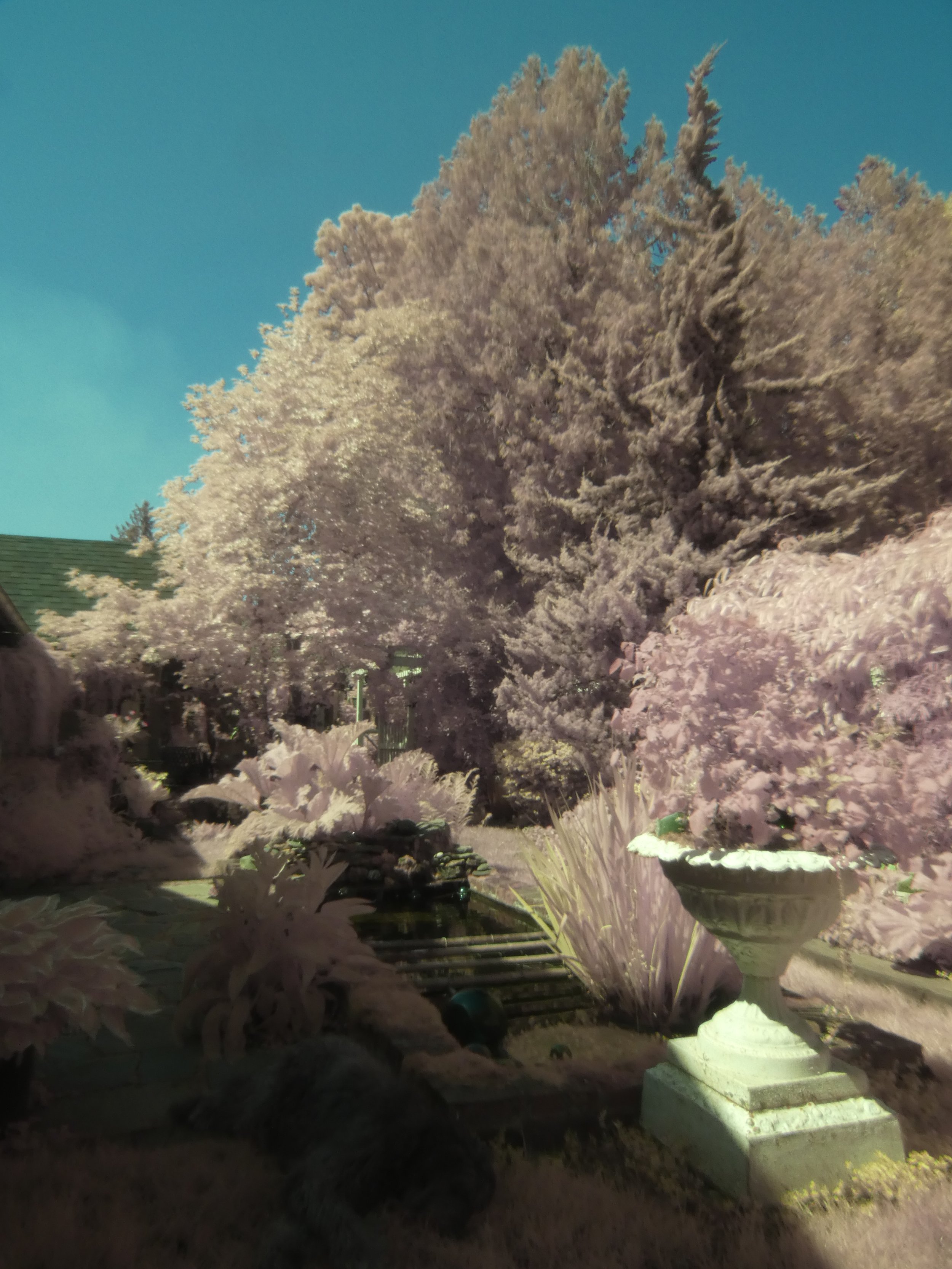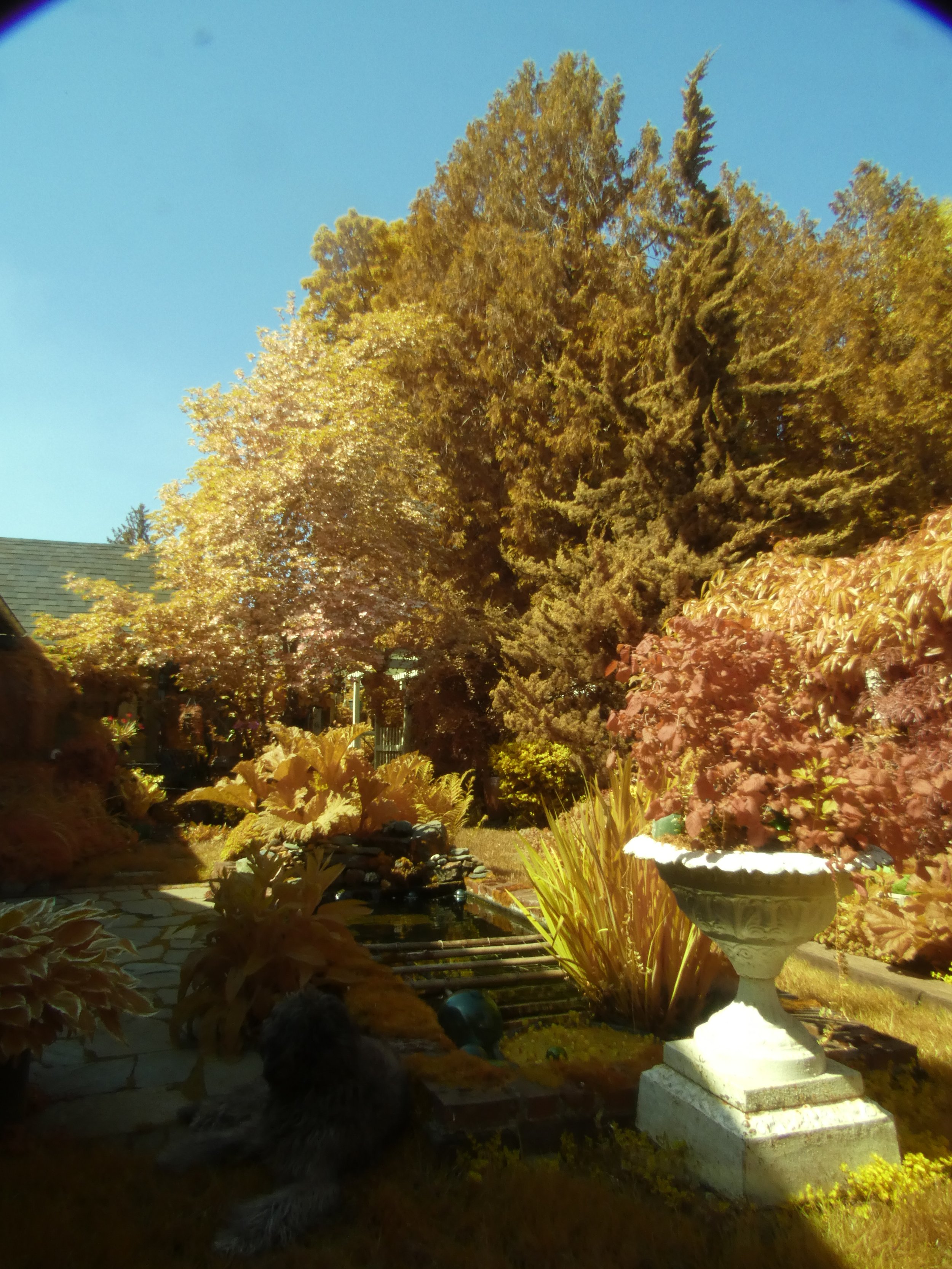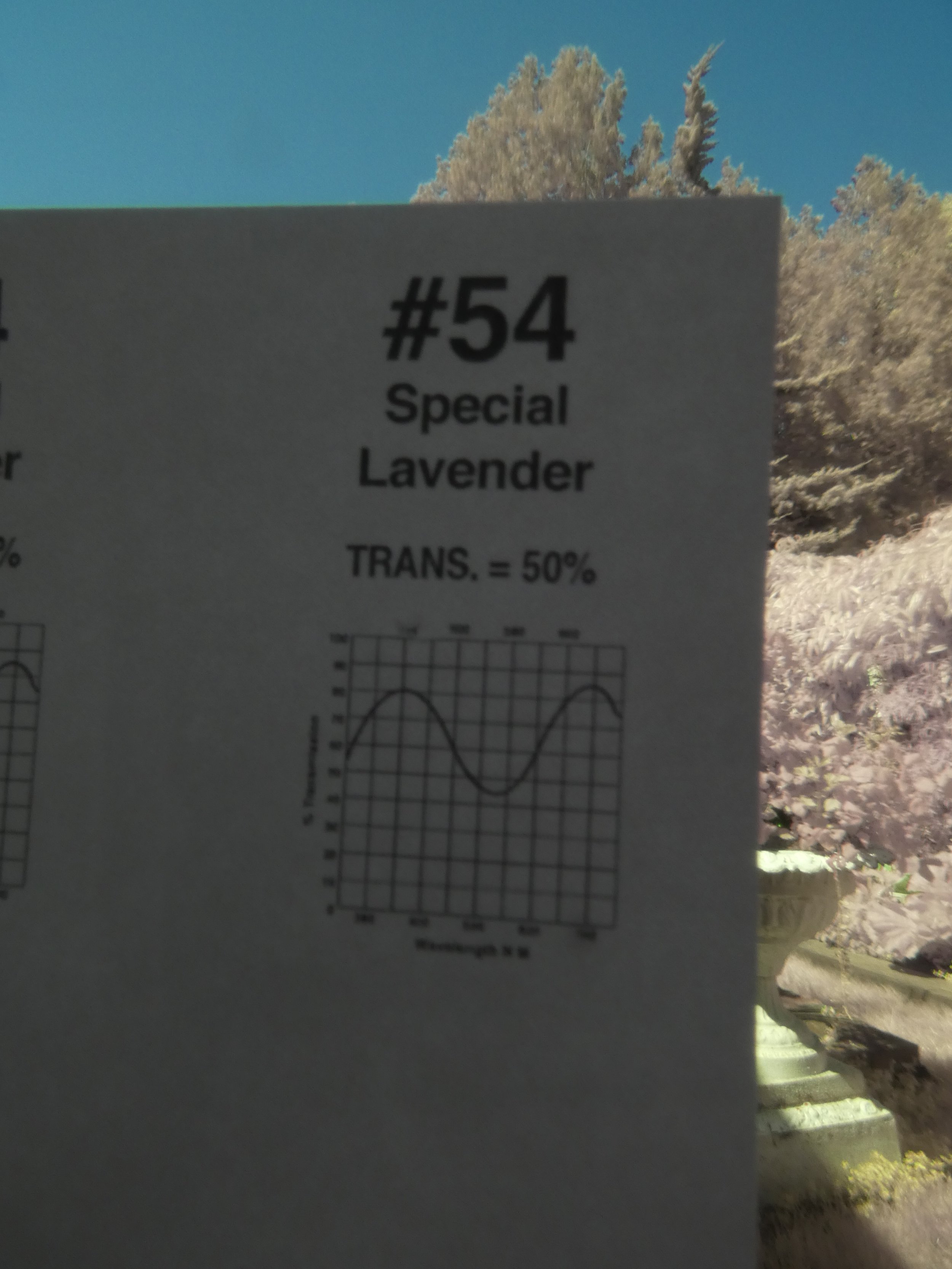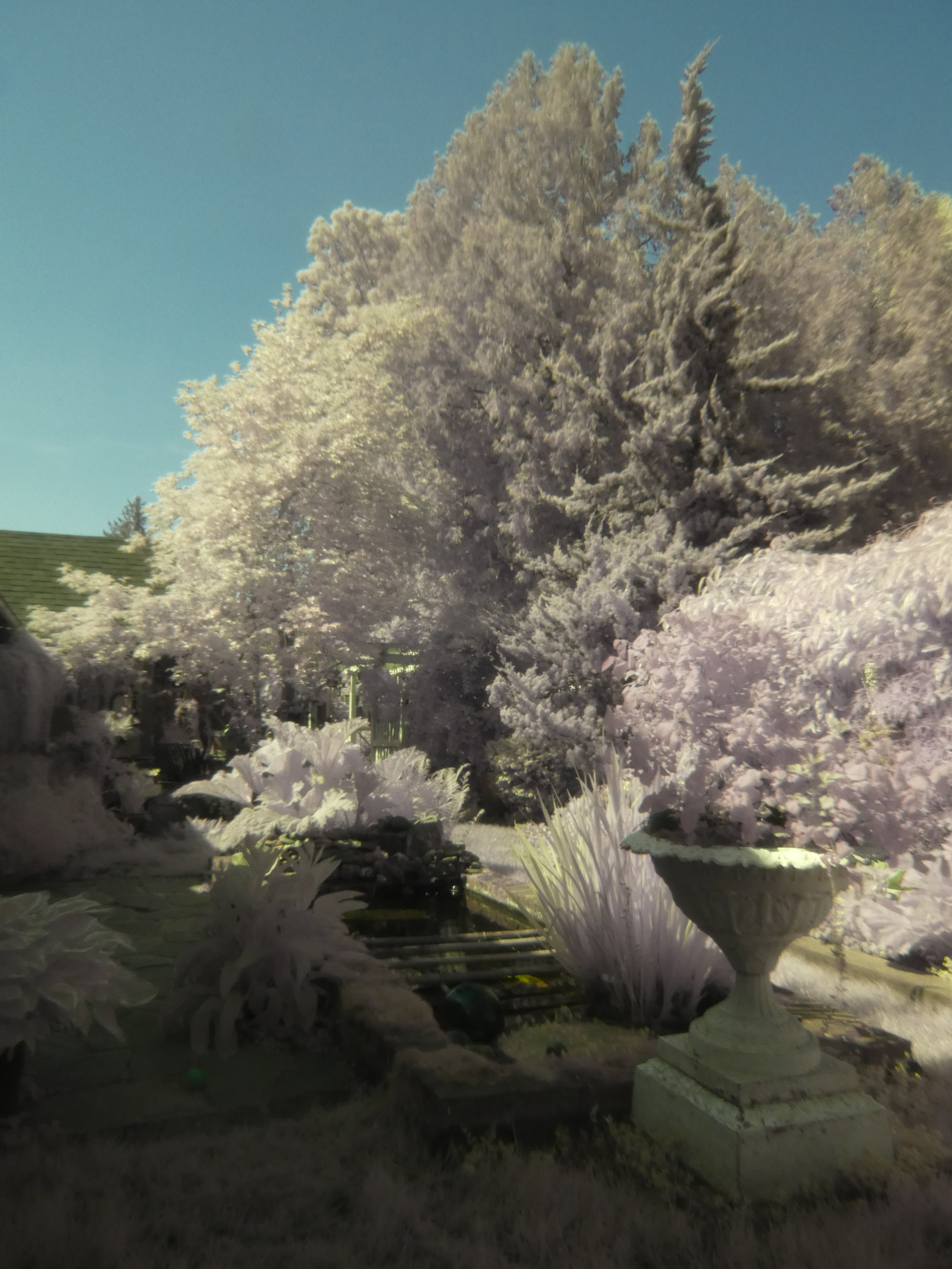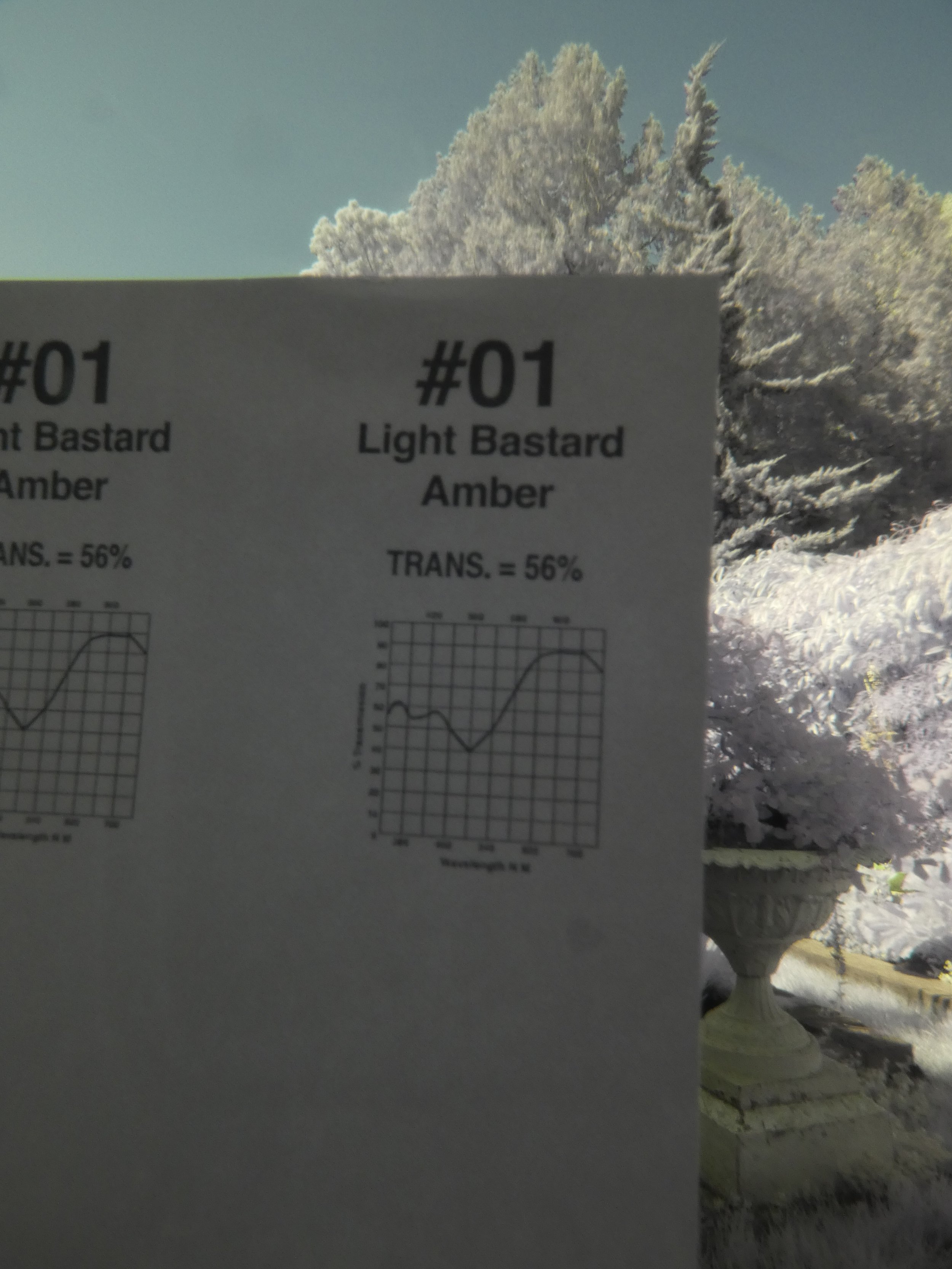Comprehensive test of roscolux gel filters for digital infrared and full spectrum photography - digital aerochrome
For a while now I have been fascinated by color infrared and full spectrum digital photography, and wanted to affordably achieve the extraterrestrial colors that can really only be achieved through them.
There is a lot of great info and resources online for achieving this;
but I found the ready made offers far too expensive for a niche experiment, and the affordable info not covering the full gambit of colors and instead only highlighting a few choices, so I took what I could find and set off on my own.
The first problem was getting a cheap full spectrum camera. I personally wanted something around $100, with plenty of features, high resolution, and I didn’t mind converting it myself. My solution was a 18mp Lumix ZS60, for few reasons, IFIXIT has a guide for taking the camera apart to fix the sensor, I found one on ebay that had dust in the sensor in my price range, and Kolari has also taken a liking to the Lumix line, for which they offer a filter ring that worked perfect for said camera.
Now that I had my camera, which came apart without issue, including the tiny glued on ir/uv filter on the end of the sensor(note that I did not replace this filter with clear glass, and there are some issues with autofocus, especially when fully zoomed), I had to decide the best way get the filtering I desired. My chosen solution was a 52mm ebay kg3, a 52mm Nikon 3”x3” gel filter holder, and Roscolux 3”x6” light gels (as a substitute for the more commonly recommended Lee filter gels, as the Rosco branded ones are cheaper, more available and most importantly fit well in the Nikon holder).
Below you can see images from said setup. Image #1 is no filter and auto white balance (full spectrum), #2 is no filter and custom white balance (full spectrum), #3 is Tiffen Standard Hot Mirror and custom white balance (visible light), and #4 is Chinese KG3 filter and custom white balance (partial infrared and visible light).
The final step was to comprehensively test my new setup. To do this I set up my new camera on a tripod, and went through all of the two digit and low transmission gel filters (in my experience the darker the filter, the more dramatic the color), both without and with the kg3 filter. To get the best and most repeatable result I used the adjustable white balance setting on the camera, and either a white sheet of paper or a white balance card to set said white balance after each change of the filter.
The images below are jpegs from the camera, which I chose to upload over the raws due to file size, so there is some in camera processing going on that makes the colors less vibrant, and automatic cropping to account for the vignetting caused by the filters. Also how you achieve your white balance adjustments can wildly change the image as well, so this set of images is in my opinion most useful in broad strokes. Your milage will vary based on your camera and processes, but I think this is still quite helpful overall.
First is the color card of the gel filter on the camera.
Second, is a white balance adjusted photo without the kg3 filter (for full spectrum).
Third, a white balance adjusted photo with both the gel color filter and the kg3 filter (for infrared E.g. aerochrome).























































































































































































